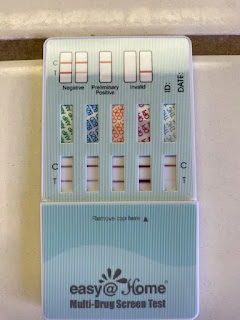"Why do I get negative results on some tests and positive on others?"
Optimizing Detox and Self-Testing for Consistent Results
In the pursuit to eliminate toxins from our bodies, many individuals turn to detoxification methods and self-testing. However, a common question that often arises is, "Why do I get negative results on some tests and positive on others?" In this article, we will delve into the intricacies of detoxing and self-testing, exploring the factors that can lead to varying results and providing guidance on achieving consistent and accurate outcomes.
Understanding the Threshold Cut-Off
One of the key factors that can lead to differing test results is the threshold cut-off. This cut-off represents the minimum level of a substance, such as a metabolite or toxin, that a test can detect. When you are close to this threshold, even minor variations in your body's composition and activity can affect the outcome of your test.
Factors Affecting Test Results
To ensure reliable and consistent test results, consider the following factors:
1. Timing
Testing at different times of the day can yield varying results. Urine is typically most concentrated in the morning, making it an ideal time for testing. Passing a test in the morning indicates a higher likelihood of passing later in the day after hydration. However, if you fail the morning test, trying again in the evening when you're adequately hydrated may yield different results.
2. Hydration Levels
Maintaining consistent hydration levels is crucial. While it may be tempting to consume excess water, thinking it will help, it can actually dilute the concentration of substances in your urine, potentially leading to skewed results. Stick to your normal hydration levels to maintain consistency.
3. Physical Activity
Engaging in cardio exercises can release stored metabolites into your bloodstream, which may affect test results. It's advisable to avoid cardio activities for at least two days before self-testing to minimize this impact.
Best Practices for Consistency
To achieve consistent and reliable results when detoxing and self-testing, follow these best practices:
1. Self-Test Once a Week
Limit your self-testing to once a week while doing cardio. Frequent testing can lead to variations in results, as your body's composition changes over time from cardio which releases drug metabolites. Waiting a a couple days without cardio allows for a result not impacted by this variable.
2. Choose the Right Time
Select a time for testing that aligns with your goals. Morning testing is recommended for an initial check, and if you pass, you can be confident about subsequent tests later in the day. However, if you test positive results difficulties in the morning, you can opt for an evening test when you're better hydrated. This would also be when you want to test for real.
3. Maintain Hydration
As mentioned earlier, consistency in hydration is vital. Stick to your normal hydration levels and avoid excessive water consumption before testing to ensure accurate results and avoid false negative results.
In conclusion, achieving consistent and accurate results when detoxing and self-testing requires a clear understanding of the factors that influence test outcomes. By following the best practices outlined in this article, you can optimize your testing process and increase the likelihood of achieving the results you desire. Remember that consistency in timing, hydration, and physical activity is the key to success in this endeavor.
If you are unable to detox naturally in time for a urine drug test it is always easier to simply substitute with a quality powdered synthetic urine like FAKE IT










